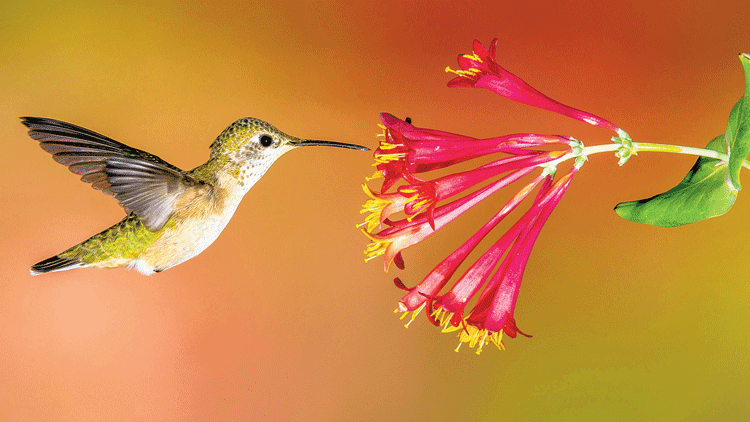Hummingbirds were already impressive. They move like hurried insects, turn on aerial dimes and extract nectar from flowers with almost surgical precision. But they conceal another talent, too: seeing colours that human eyes can’t perceive.
Ultraviolet light from the sun creates colours throughout the natural world that are never seen by people. But researchers working out of the Rocky Mountain Biological Laboratory reported on Monday in Proceedings of the National Academy of Sciences that untrained broad-tailed hummingbirds can use these colours to help them identify sources of food.
Testing 19 pairings of colours, the team found that hummingbirds are picking up on multiple colours beyond those we can see. From the bird’s-eye view, numerous plants and feathers have these as well, suggesting that they live in a richer-hued world than we do, full of signs and messages that we never notice.
Compared with the colour vision of many other animals, that of humans leaves something to be desired. The perception of colour relies on cone cells in the retina, each of which responds to different wavelengths of light. Humans have three kinds of cone cells, which, when light reflects off an apple, a leaf or a field of daffodils, send signals that are combined in the brain to generate the perception of red, green or yellow.
Birds, however, have four types of cones, including one that is sensitive to ultraviolet light. (And they are far from the most generously endowed — mantis shrimp, for instance, have 16.)
In lab experiments, birds readily pick up on UV light and UV yellow, a mixture of UV light and visible yellow wavelengths, says Mary Caswell Stoddard, a professor of evolutionary biology at Princeton University and an author of the new study. Likewise, researchers have long known that UV colours are widespread in the natural world, though we can’t see them. However, experiments to see whether wild birds would use UV colours in their daily lives had not yet been performed.
To find out, she and her colleagues spent three summers in a mountain meadow near Gothic, Colorado, watching hundreds of hummingbirds.
Among the wildflowers, the researchers planted an experimental set-up: two tripods, each topped with a saucer filled with liquid and a coloured LED light. The lights attached to the tripods often looked identical to the human eye. But in many of the pairings, one was actually a mixture of visible light, like green, red or yellow, and ultraviolet light, while the other produced just the visible light version. To the hummingbirds, the two LEDs would look completely different.
The team tracked around 6,000 visits by passing hummingbirds, which sampled the fluids of these man-made blossoms. They swapped the tripods’ positions when the birds were away, to keep them from simply returning to the same location for a dose of sugar, and kept track of how many times birds chose the saucer with sugar water.
To the researchers’ excitement, it rapidly became clear that distinguishing the colours and learning which signalled food posed no problem for the hummingbirds.
“Even though we expected birds to tell these colours apart, seeing them do it with my own eyes was really remarkable, because these two colour light tubes look identical to me,” Dr Stoddard said. “Watching the birds reveal to us some truth about their visual world was really amazing.”
To quantify how common UV colours are in the natural world, the researchers looked at the light reflected off nearly 1,000 samples of bird plumage and more than 2,000 plants. In both cases, they found, around 30 per cent of the samples would have a UV colour for hummingbirds, and likely for other birds as well — and other creatures. Many fish and reptiles have four cones, including one sensitive to ultraviolet light, said Dr Stoddard, and this ability has deep evolutionary roots.
“Dinosaurs almost certainly had four colour cone types,” she said.
“Did they see colours like UV green and UV red? Probably.”
In future research, Dr Stoddard hopes to understand more about how the behaviour of species like hummingbirds is affected by the perception of colours that people cannot see.
For instance, these experiments revealed that not all colour pairings were equally easy for the birds to learn to tell apart.
“What if the birds are better able to learn using certain colours because they are experiencing those colours to a high degree in their environment?” she speculates. “Maybe the week the scarlet gilia flowers are in bloom, hummingbirds are better able to learn and distinguish red colours.”
She aadded, “There are likely to be all kinds of interesting complicating factors.”
New York Times News Service










